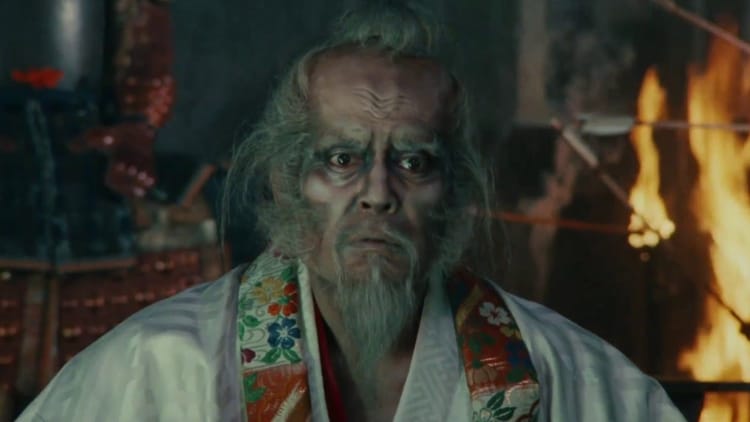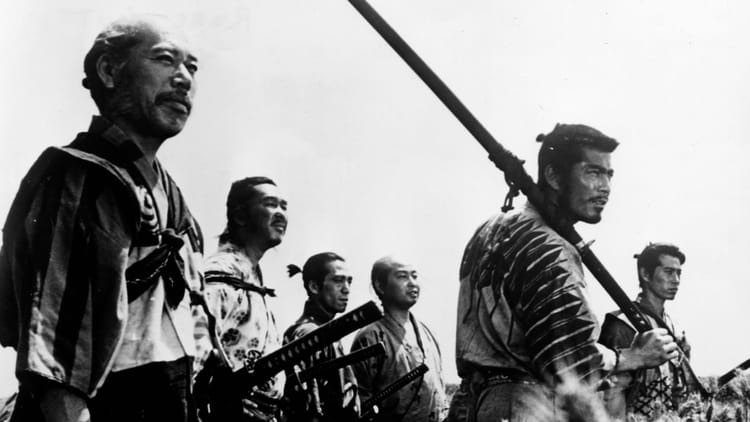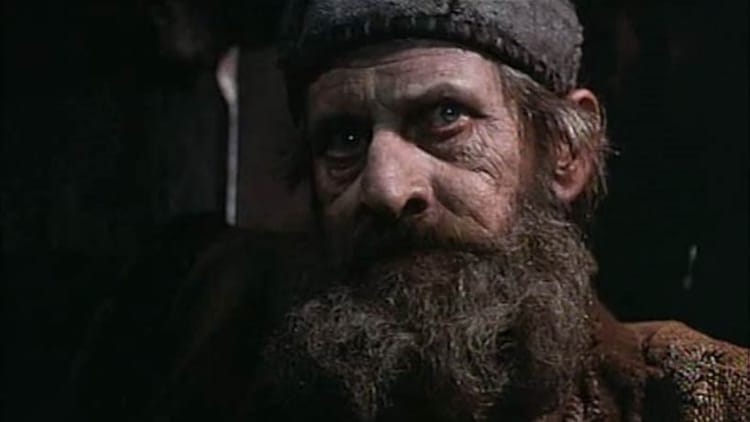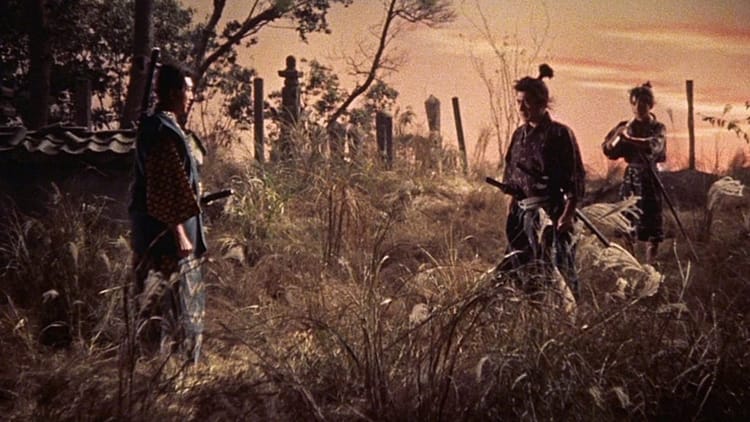Bandits vs. Samurai Squadron

Welcome to the world of Bandits vs. Samurai Squadron, or as they say in Japanese, Kumokiri Nizaemon. This is not just another heist film, and it’s not your typical period drama either. Directed by the legendary Hideo Gosha, this film is a wild ride that smashes together film noir’s gritty vibes with the historical elegance of jidai geki. We’re talking about a movie that dares to be different, flipping between jaw-dropping action scenes and those slow, deliberate moments where life just happens. This is a movie chock full of tits and violence, revenge and remorse. It’s rich, it’s complex, and it’s gonna blow your mind.
It’s the Edo Period (1600-1868), a time when social hierarchies were rigid, and the world was as unstable as a house of cards. Enter Nizaemon Kumokiri (Tatsuya Nakadai), the mastermind behind a gang that’s been making away with 100,000 ryo over a decade. But don’t expect a single hero to take the spotlight; this is a tapestry of tales that interweave, twist, and turn, all leading up to a final showdown where secrets spill and motivations get laid bare.
There’s Shikubu Abe (Kōshirō Matsumoto), the samurai who’s got his own story to tell, and then there’s Chiyo (Shima Iwashita), the thief with a heart of gold, except that gold is probably stolen. She’s in love with Nizaemon, and let me tell you, she’s not just some damsel in distress. Chiyo plays the game like a pro, weaving her way into the life of Kichibei Matsuya (Tetsurō Tamba), a wealthy merchant blinded by love and lust. Matsuya’s unwitting role in his own demise gives us a sly wink at society’s flaws, laying bare the fact that sometimes, love really is blind.
Money talks in this world, and it’s got a loud mouth. Merchants, once considered the bottom of the barrel, are now calling the shots. Gosha echoes Kurosawa’s Yojimbo, but he adds his own twist, using characters like Matsuya to explore the gritty realities of human motivation and societal shifts.
In true jidai geki fashion, revenge courses through the veins of this story. Nizaemon’s journey into crime isn’t just about the cash; it’s a vendetta against a corrupt system that wrecked his family. Turns out Nizaemon is actually Iori Tsuji, brother to Kuranosuke Tsuji, a samurai who got the short end of the stick with a bogus embezzlement charge. Kuranosuke’s refusal to off himself in a ritual suicide leaves his family to face execution, lighting the fuse for Nizaemon’s fiery quest for vengeance.
While some characters are as flat as a sheet of rice paper, they serve the story with precision, bringing surprise twists and turns. Check out the ex-samurai-turned-cop who crashes the climactic duel between Shikubu and Nizaemon. This unexpected curveball lets Nizaemon slip away, adding layers to the narrative’s exploration of loyalty, honor, and personal vendettas.
Even if you give up the world and sacrifice yourself in single-minded devotion to the art of theft, usually one future awaits you in our profession: hanging dead from a tree, your name forgotten to the world.
Shikubu, meanwhile, gives us a fresh perspective on conflict and honor. He sees Nizaemon not as a villain, but as a man of principle, blurring the lines between good and evil. When he pays his respects at Nizaemon’s grave, it’s a promise kept to a fallen warrior, showing that sometimes, respect runs deeper than blood.
Gosha paints a picture of Edo’s underworld in shadows and silhouettes. The night is a character in itself, draping the film in a cloak of tension and mystery. Flashbacks weave through rapid-fire edits in combat scenes, adding a layer of chaos and unpredictability. It’s a fragmented narrative that keeps you on the edge, unsure of what lurks around the corner.
The music by Mitsuaki Kanno is a haunting backdrop, with a score that swings from lively to somber. Dissonant electronic sounds and the pluck of strings underscore the film’s themes of instability and violence simmering beneath the surface.
Gosha takes a scalpel to the samurai code, exposing the rot beneath the polished exterior. Kuranosuke Tsuji’s story is a nod to the legendary Oishi Kuranosuke of the 47 ronin, a tale of revenge against a system rigged against the little guy. Gosha’s film mirrors historical echoes, offering a commentary on power’s cyclical nature and the relentless march of retribution.
Despite the darkness, the film wraps with a sliver of hope. Nizaemon’s revenge may be a dead-end, but his name is cleared, and his legacy lives on through Shikubu’s remembrance. It’s a far cry from the erasure faced by rebellious figures in history, as seen in films like Harakiri by Masaki Kobayashi.
Bandits vs. Samurai Squadron is a genre-bending masterpiece, a cinematic cocktail of heist thrills and period drama, with a dash of social critique for good measure. It’s a narrative rich with twists, visual splendor, and character dynamics that linger long after the credits roll. Challenging? Sure. But for those willing to wade into its depths, the rewards are plenty—delivering a film experience that speaks to the past while resonating with today’s audiences.
In blending film noir’s style with jidai geki’s conventions, Gosha has crafted a film that doesn’t just entertain—it elevates. Bandits vs. Samurai Squadron doesn’t just break genre boundaries; it obliterates them, offering a ride that’s as powerful as it is unforgettable.





